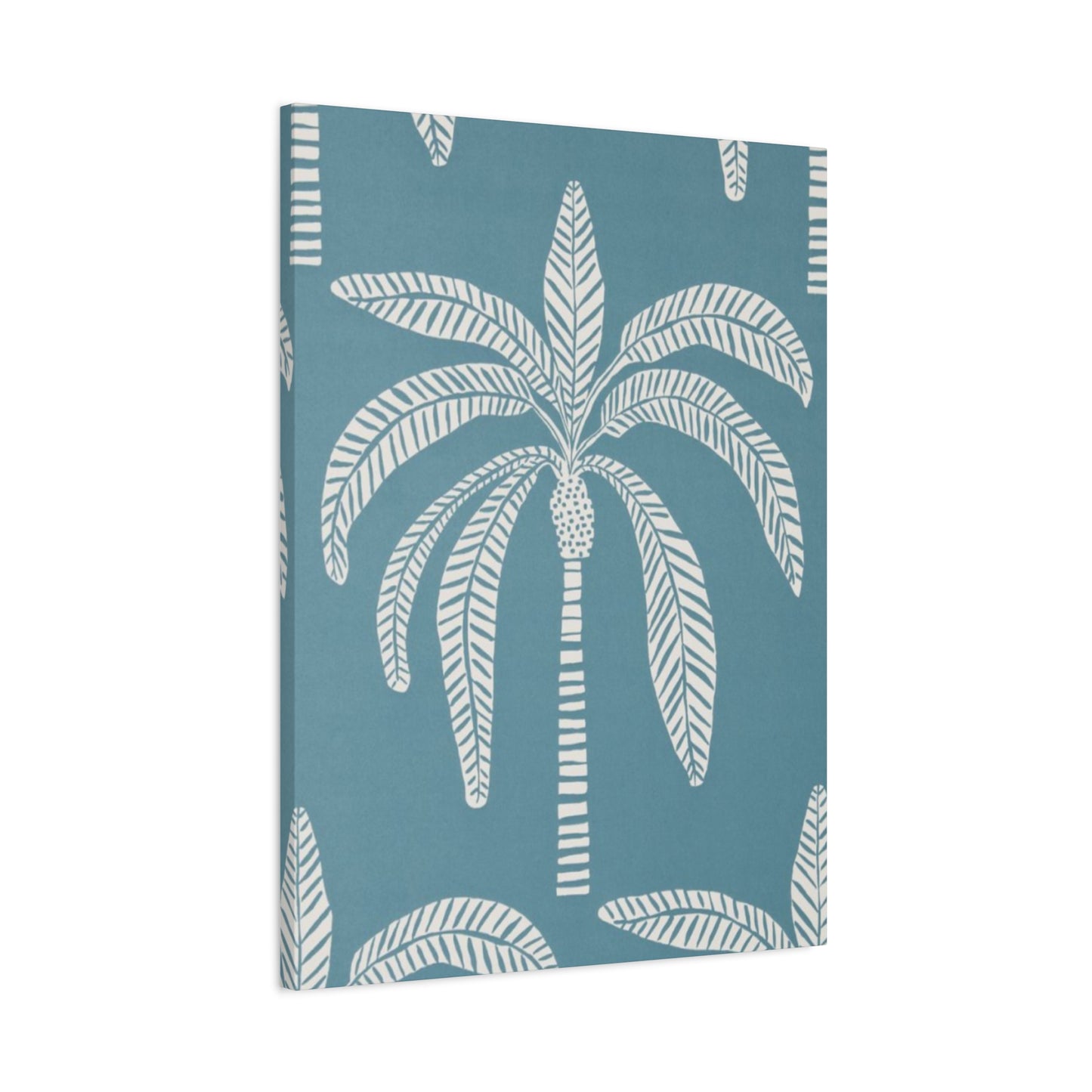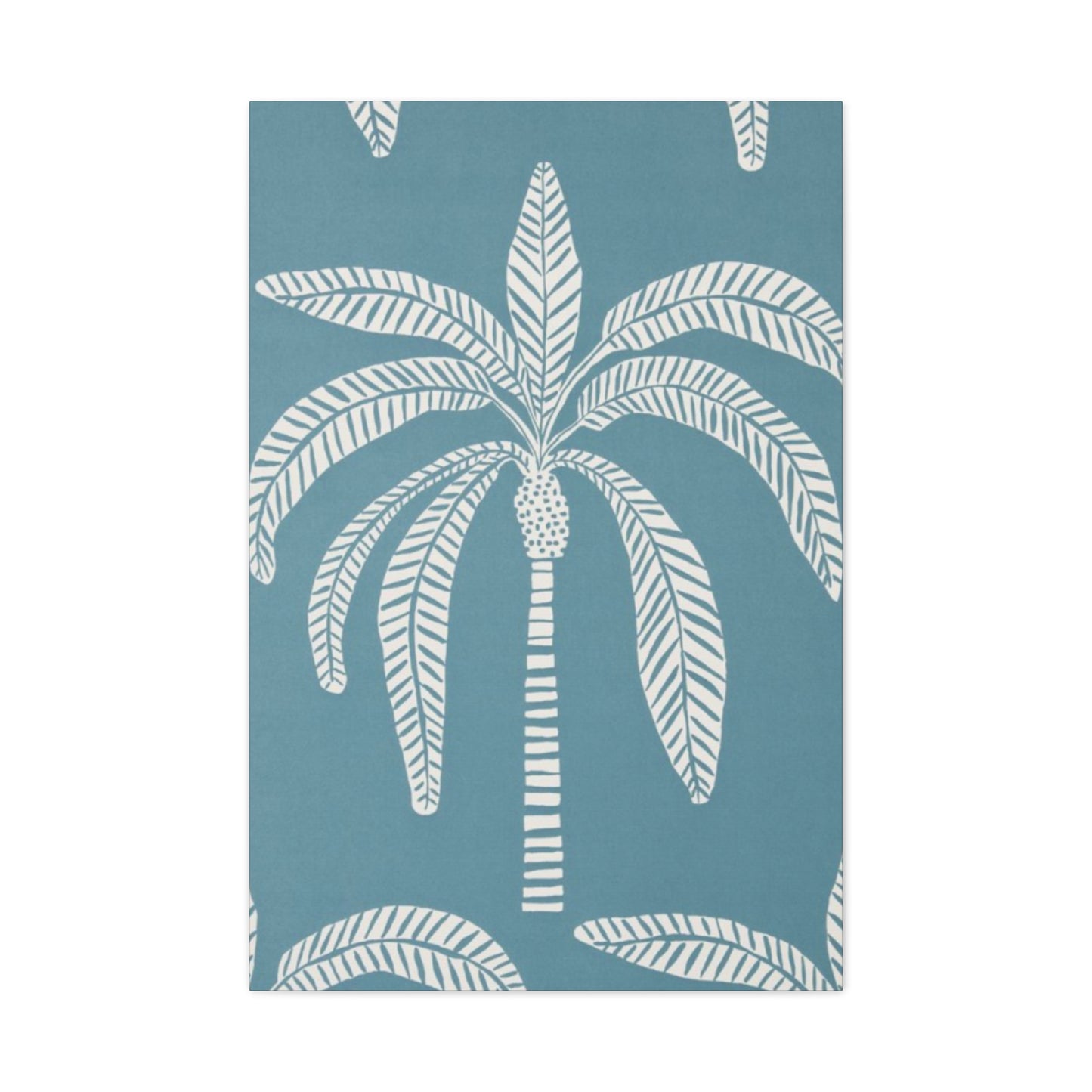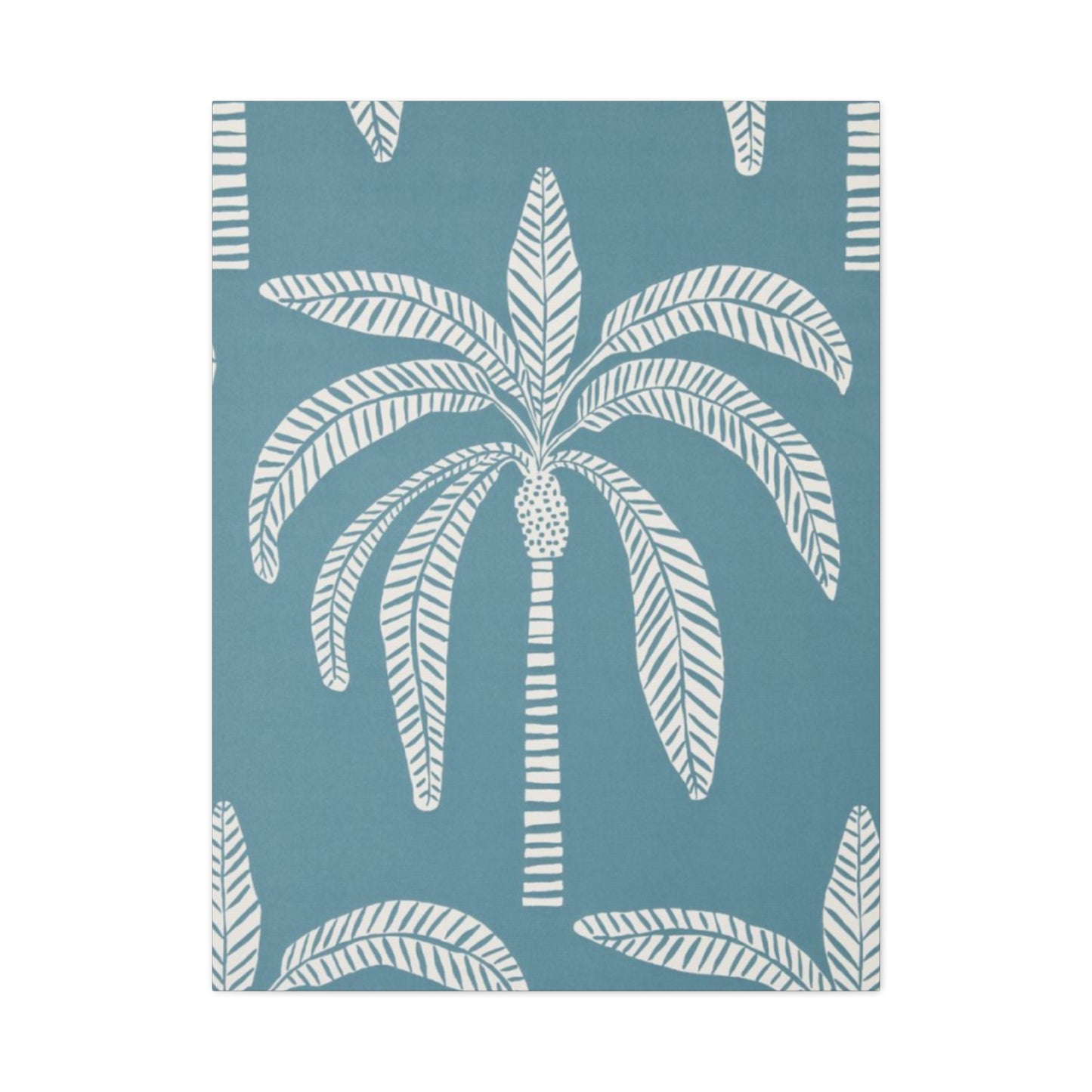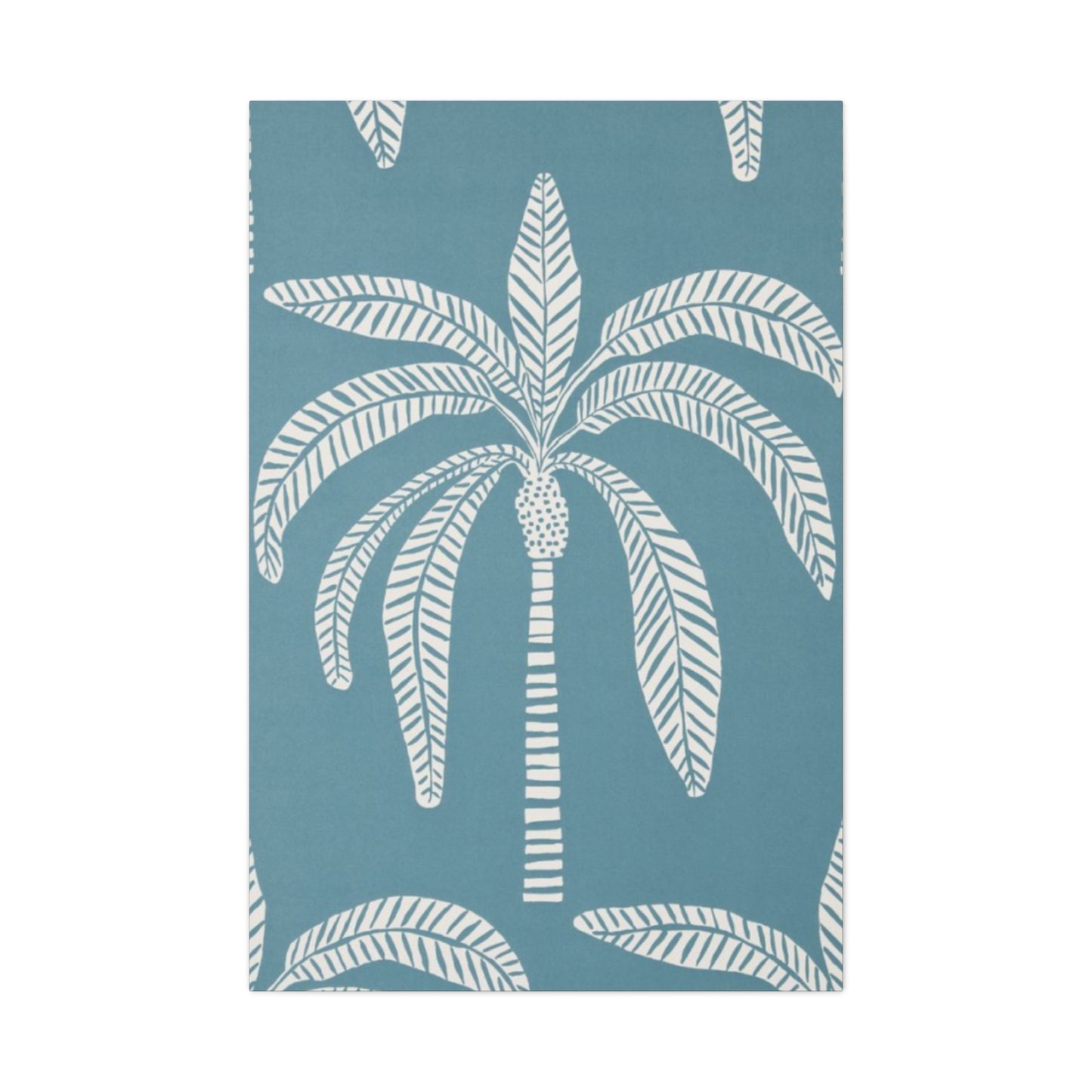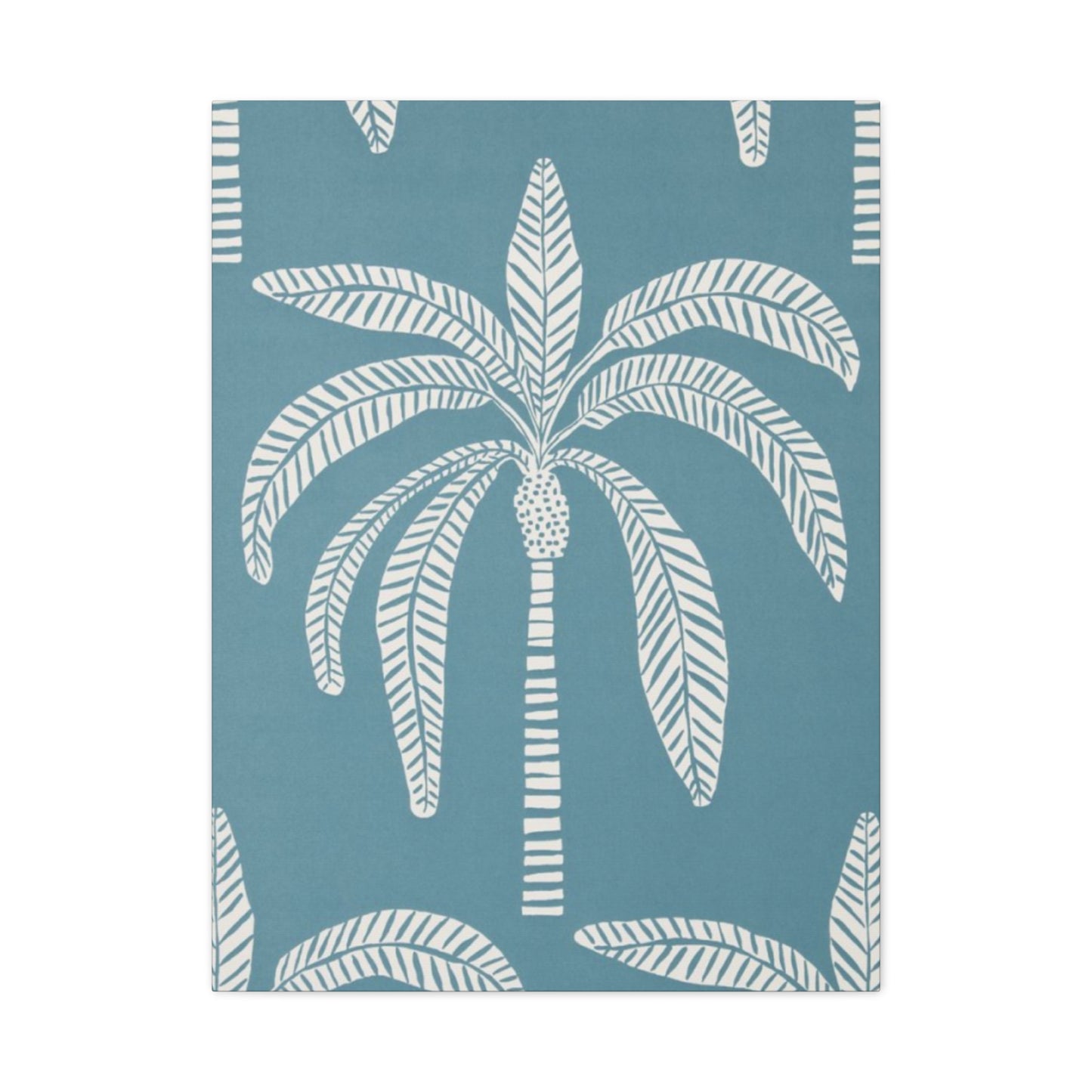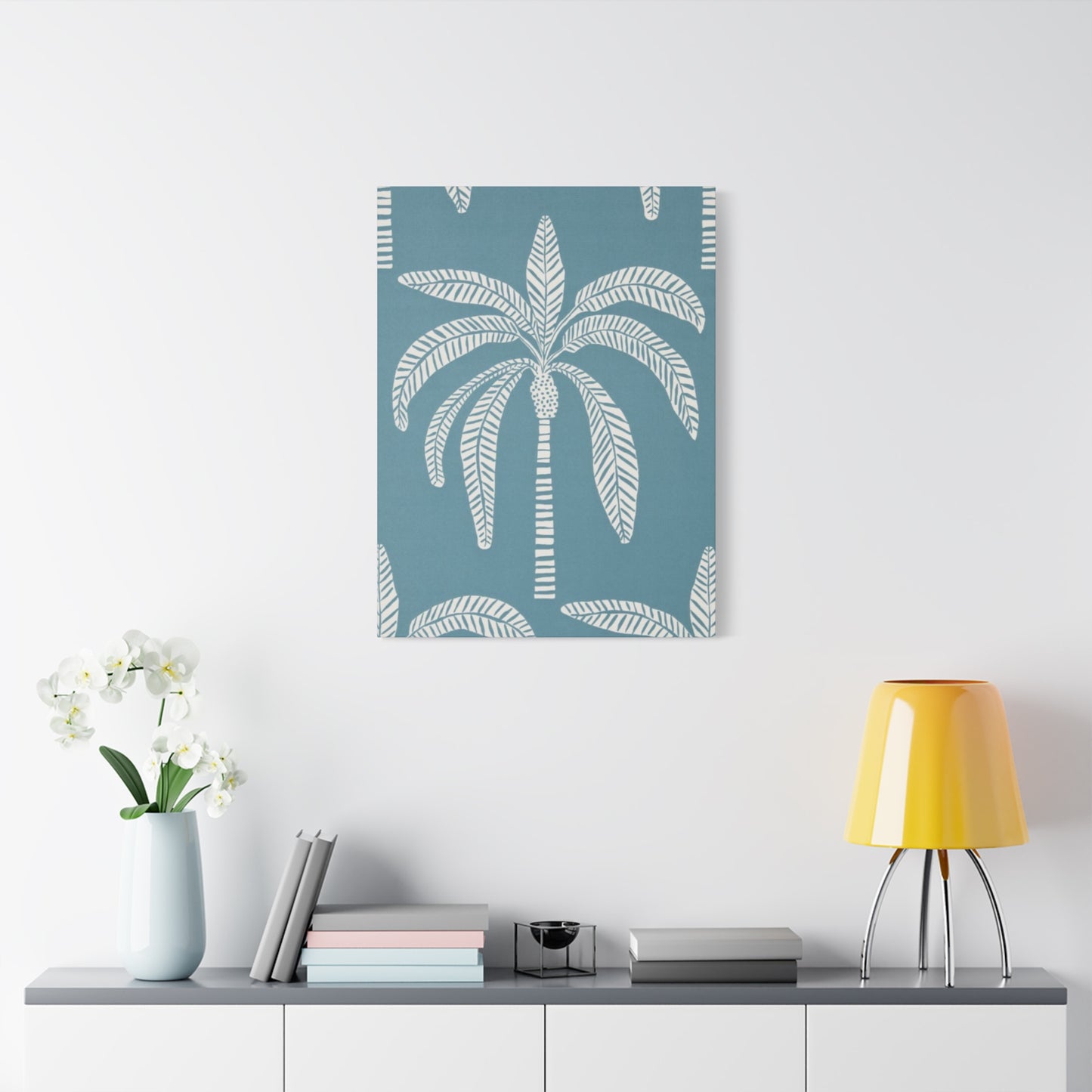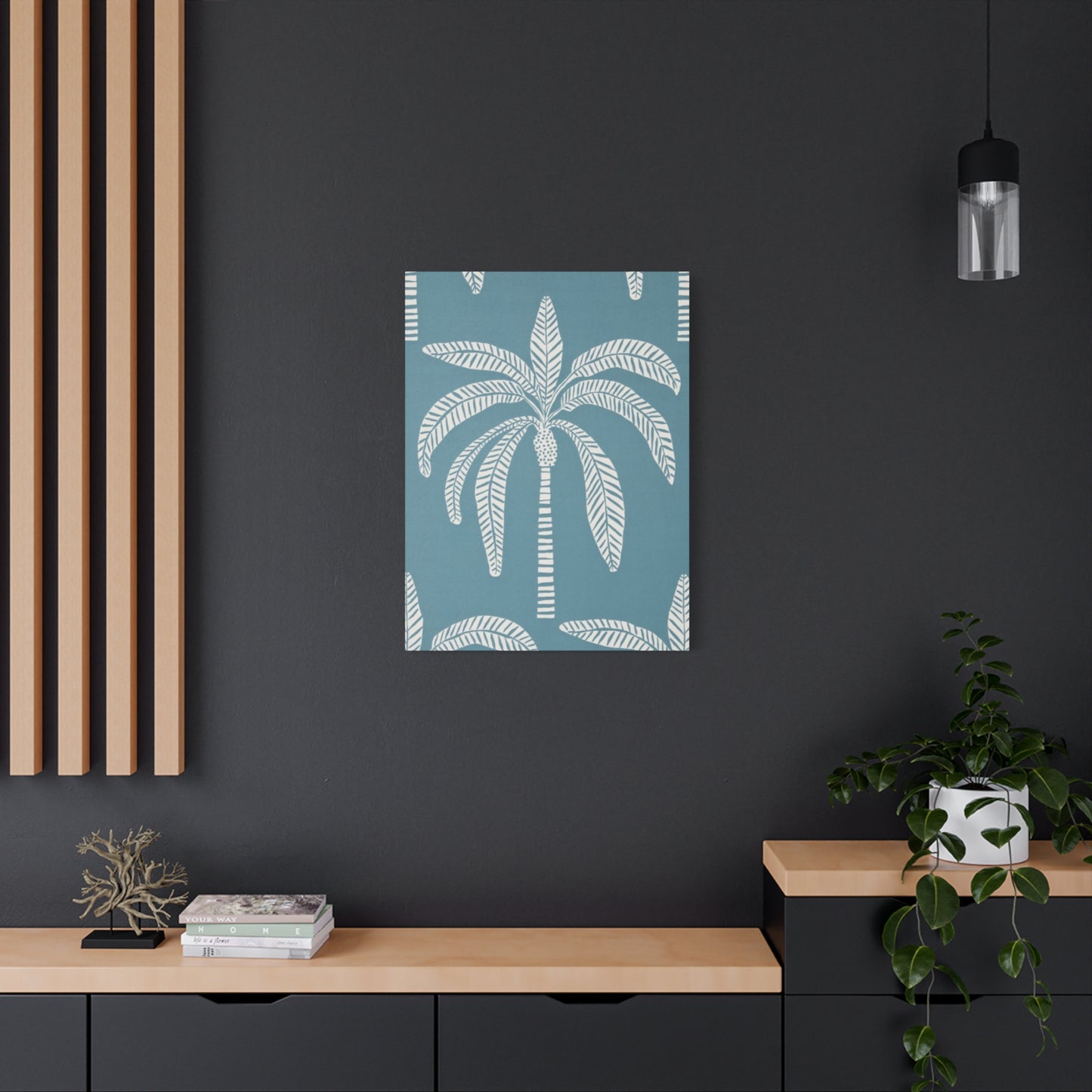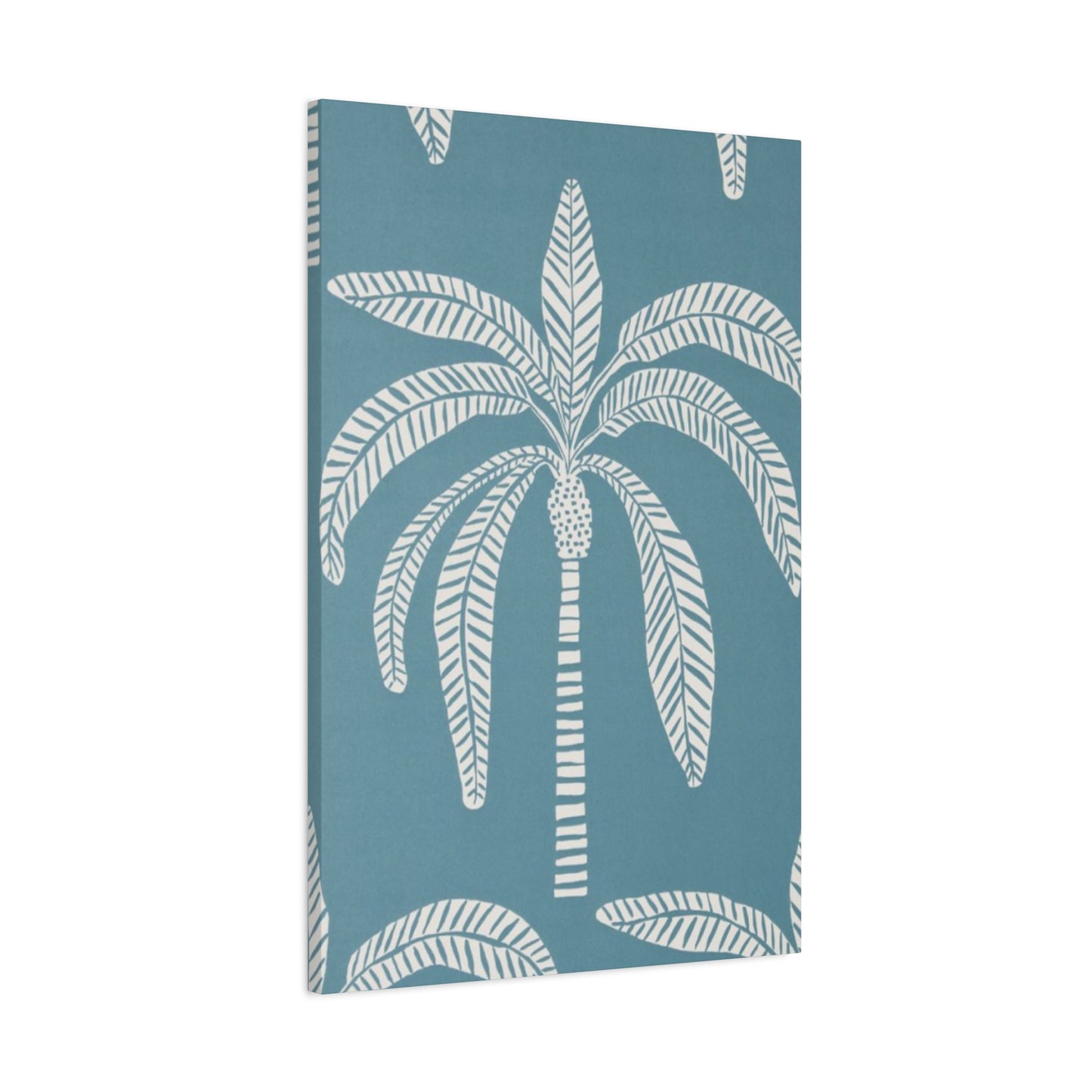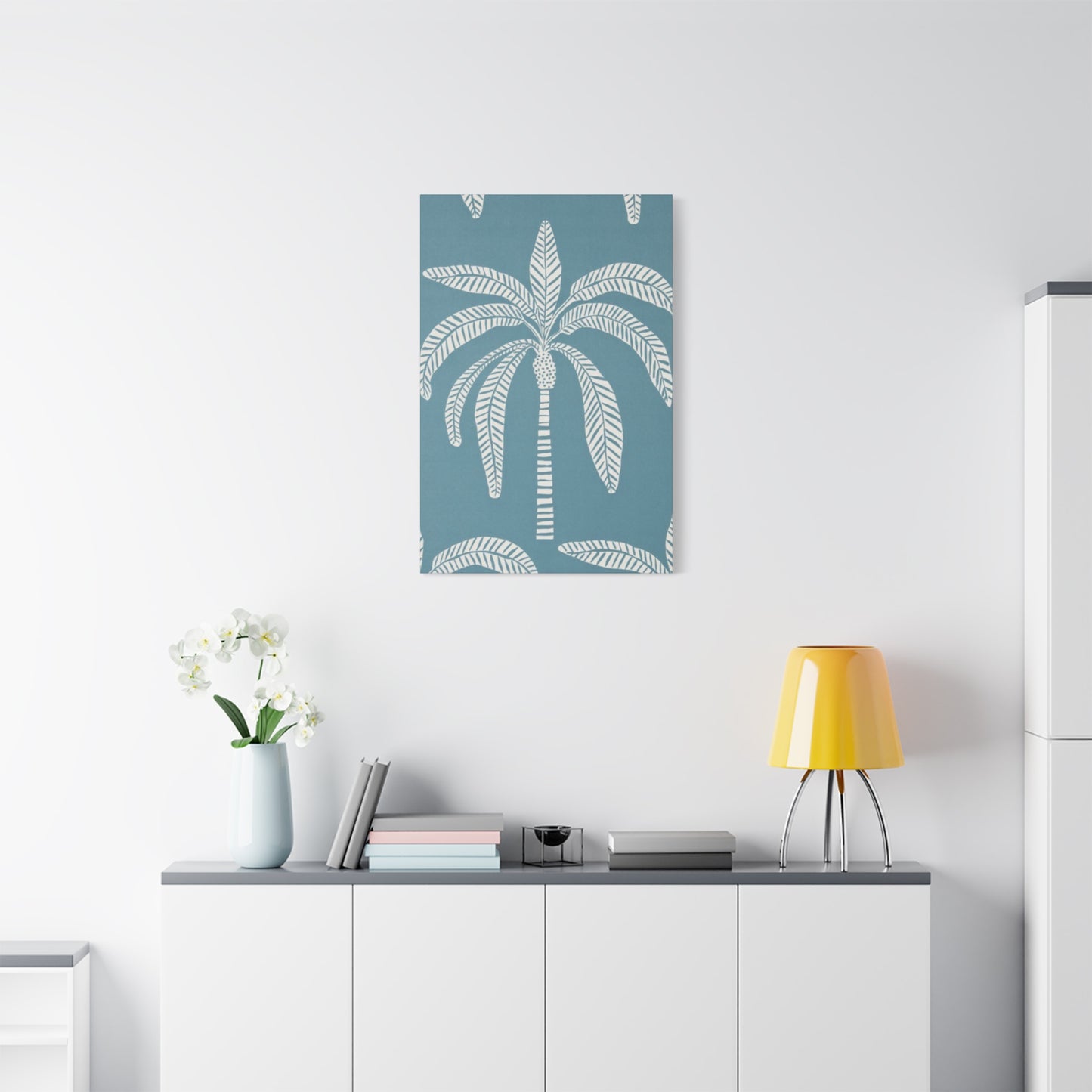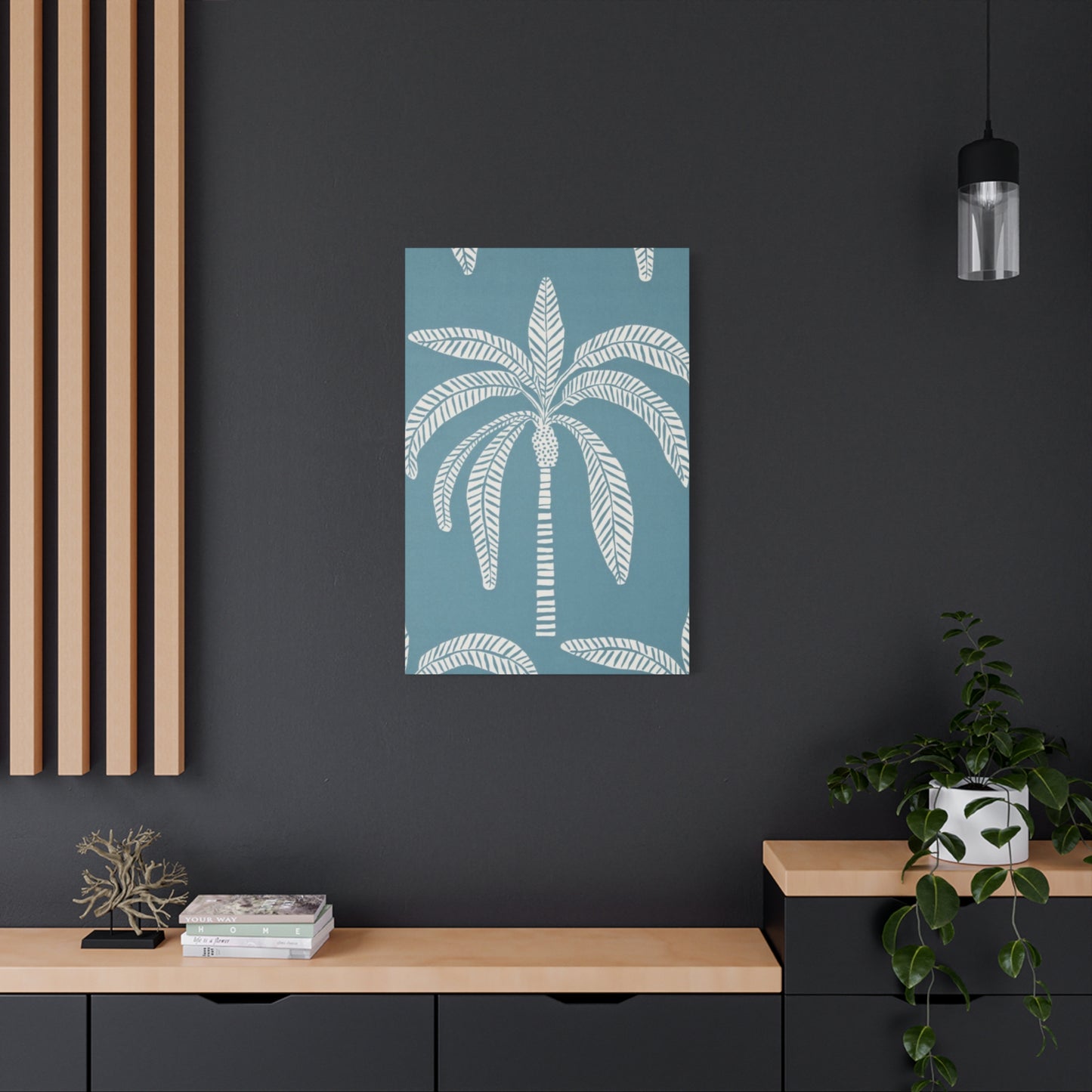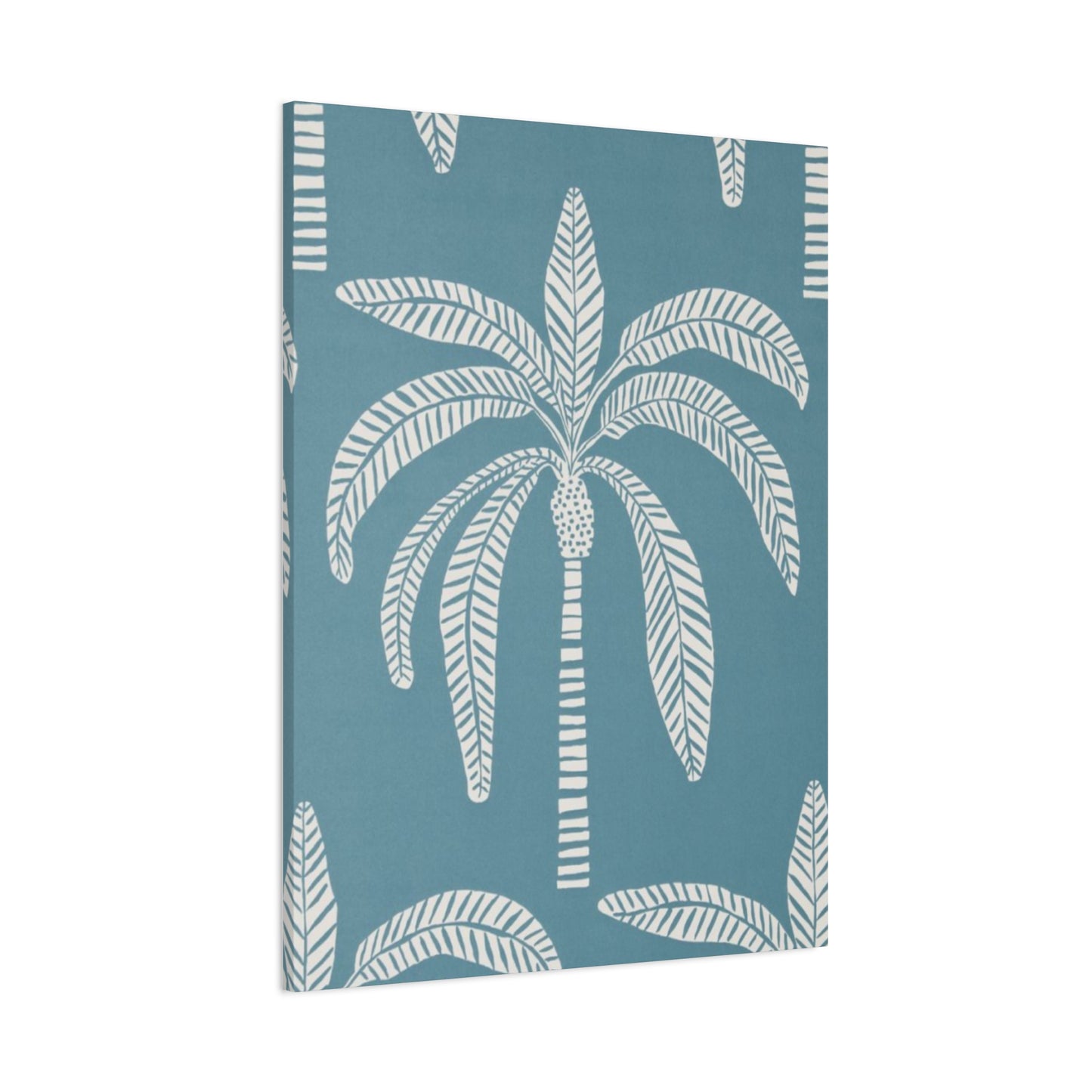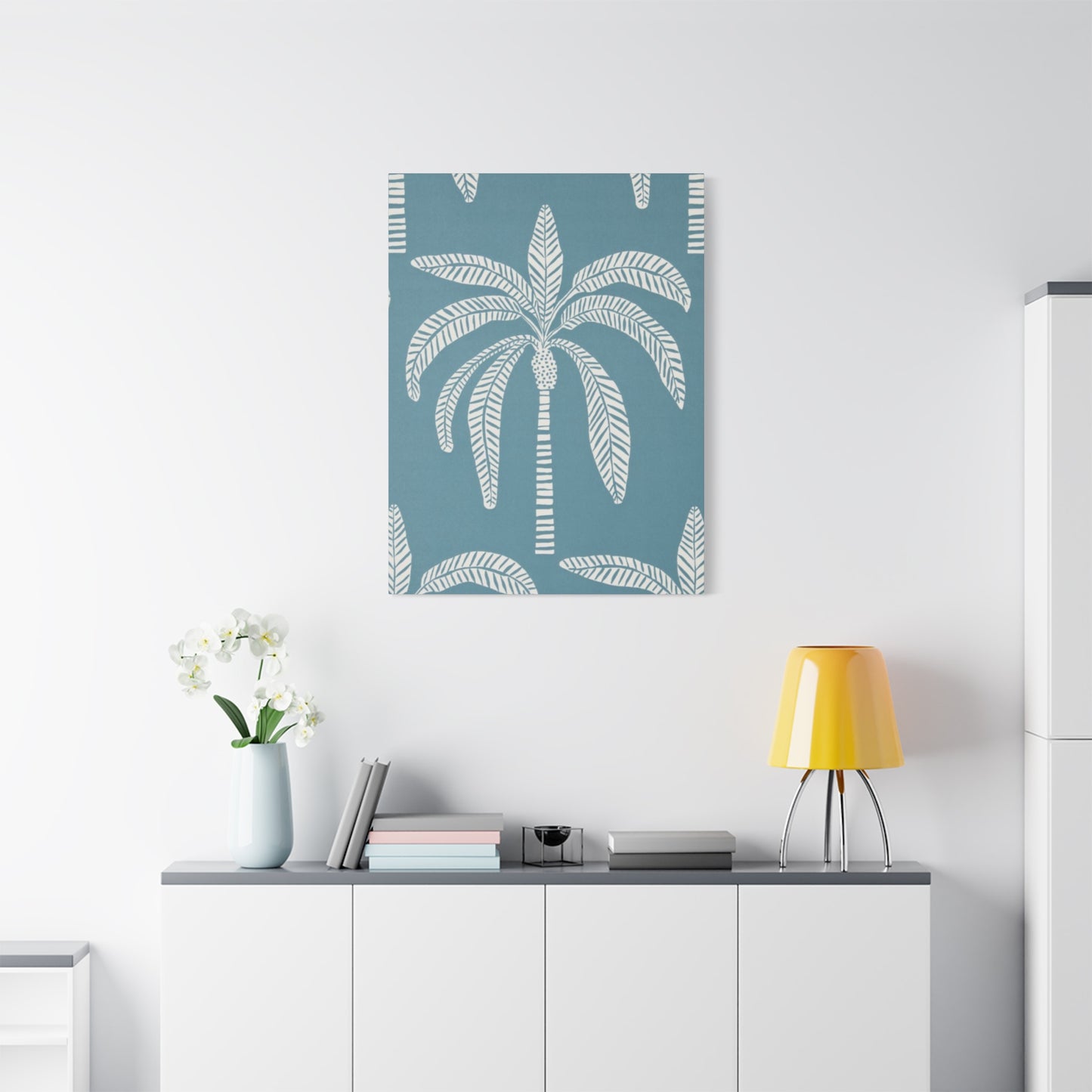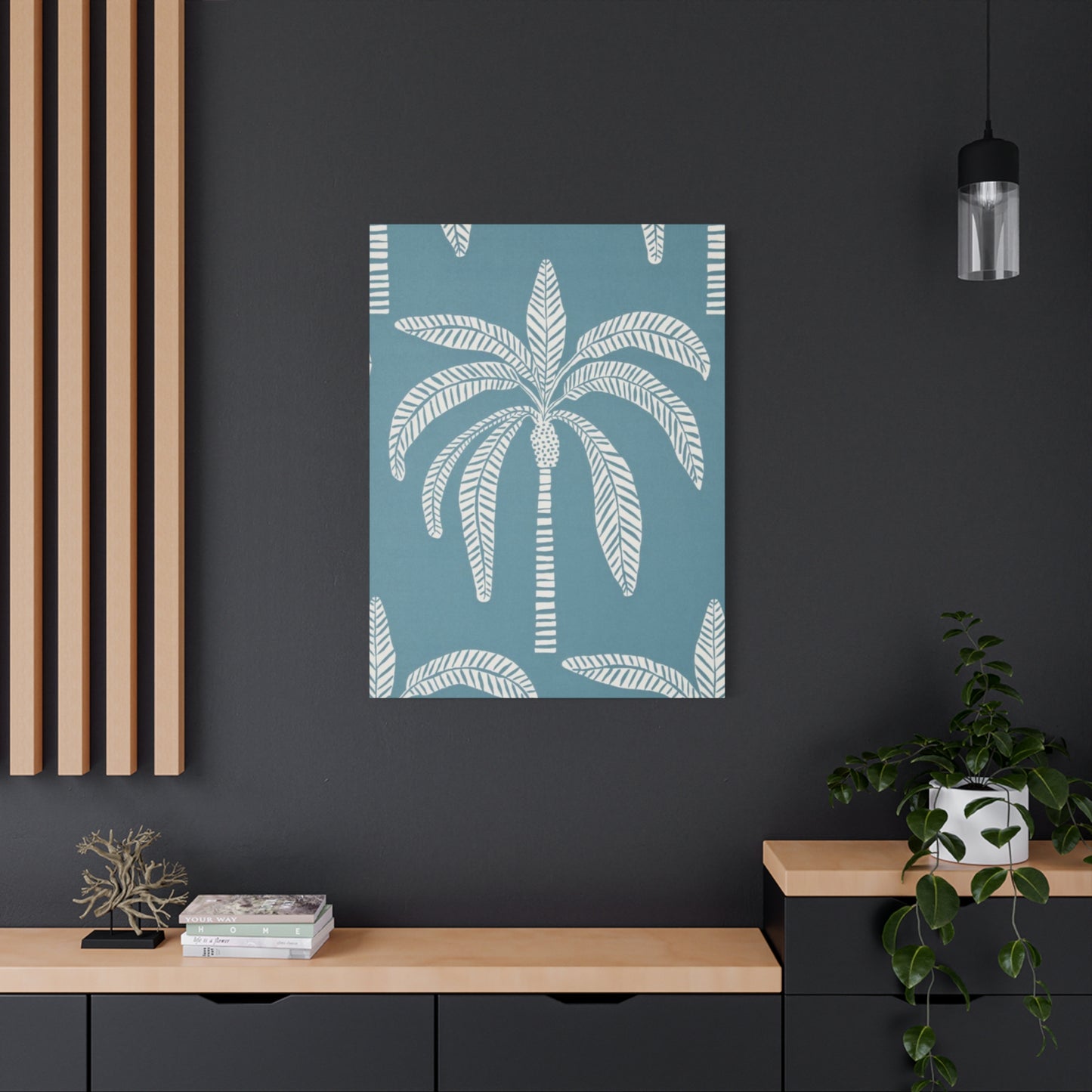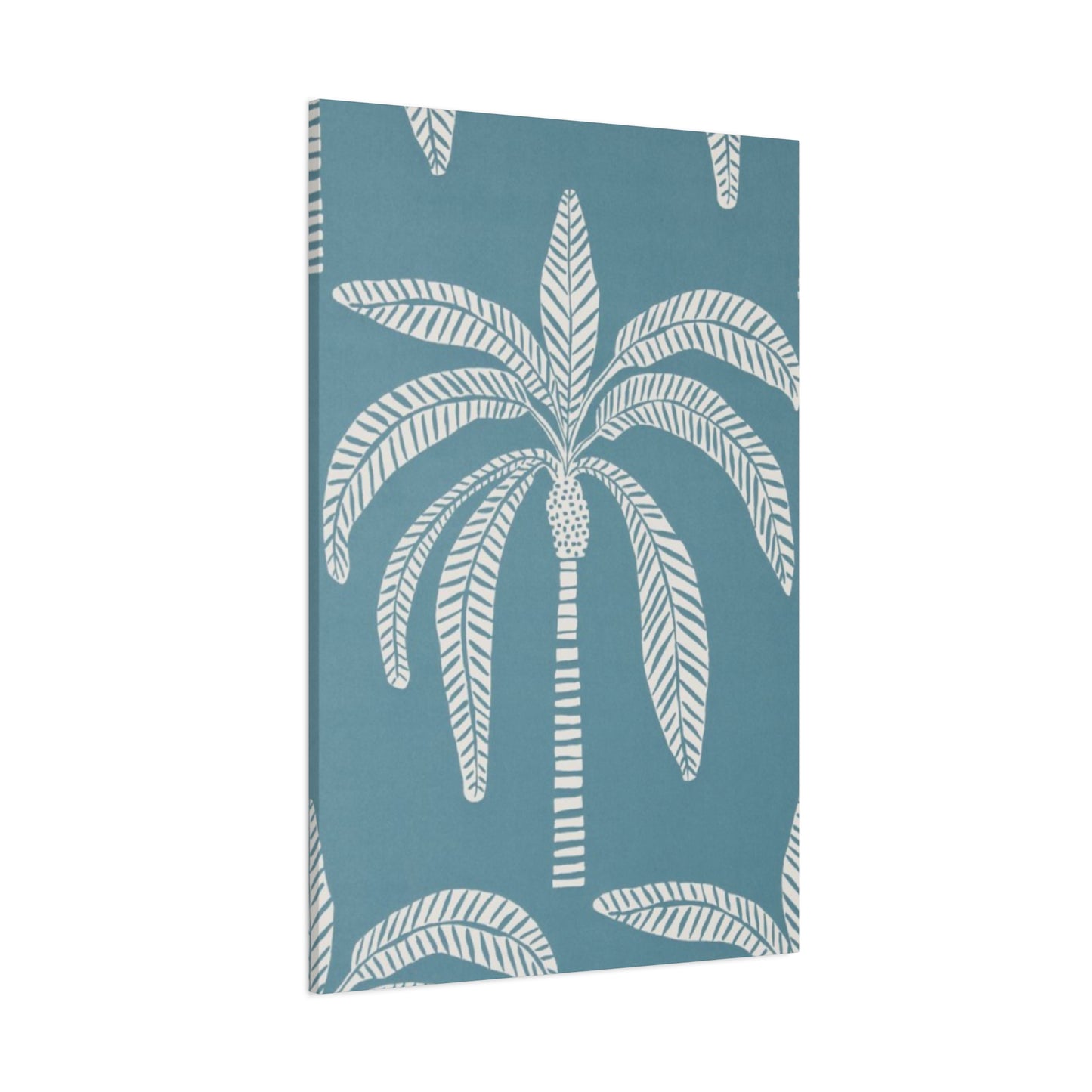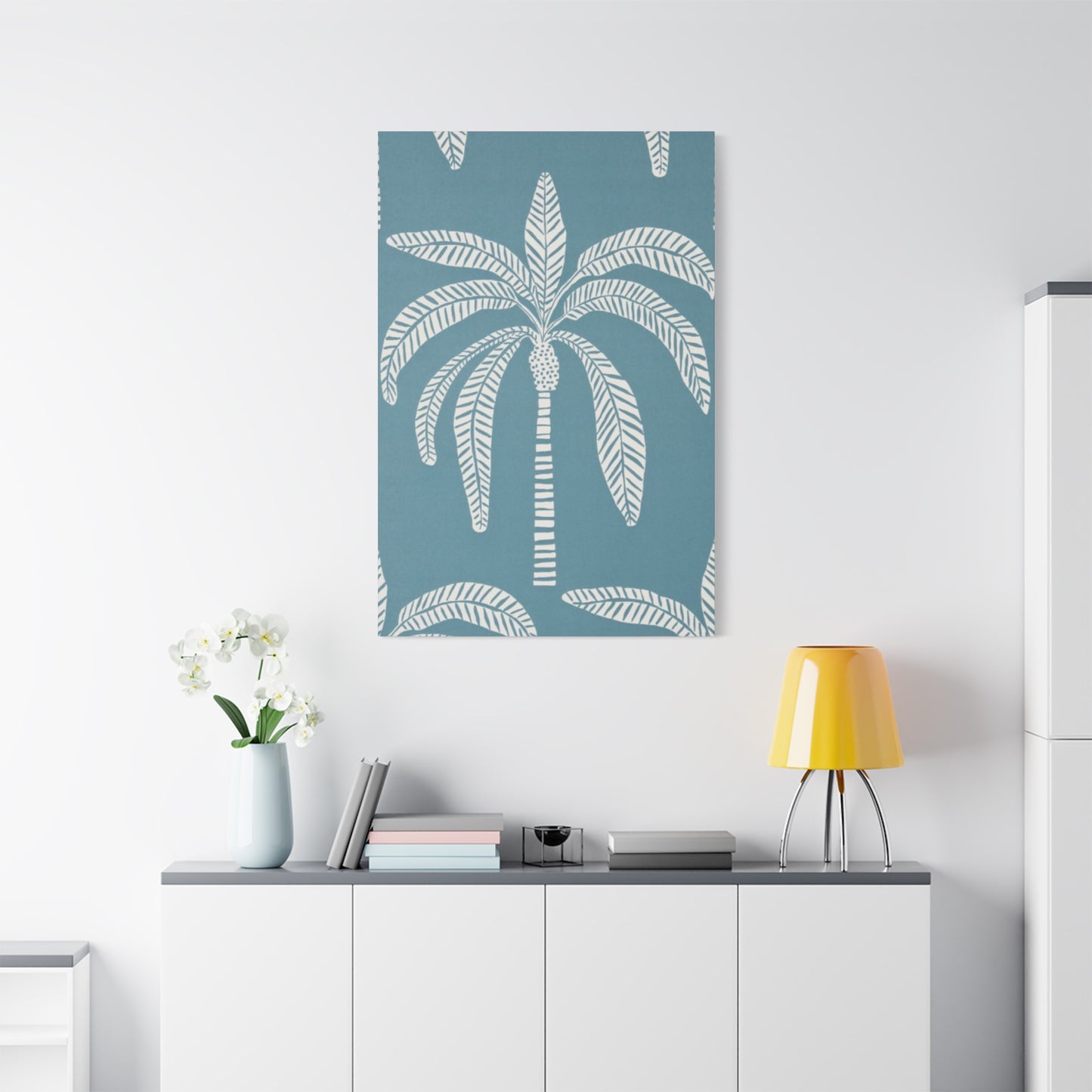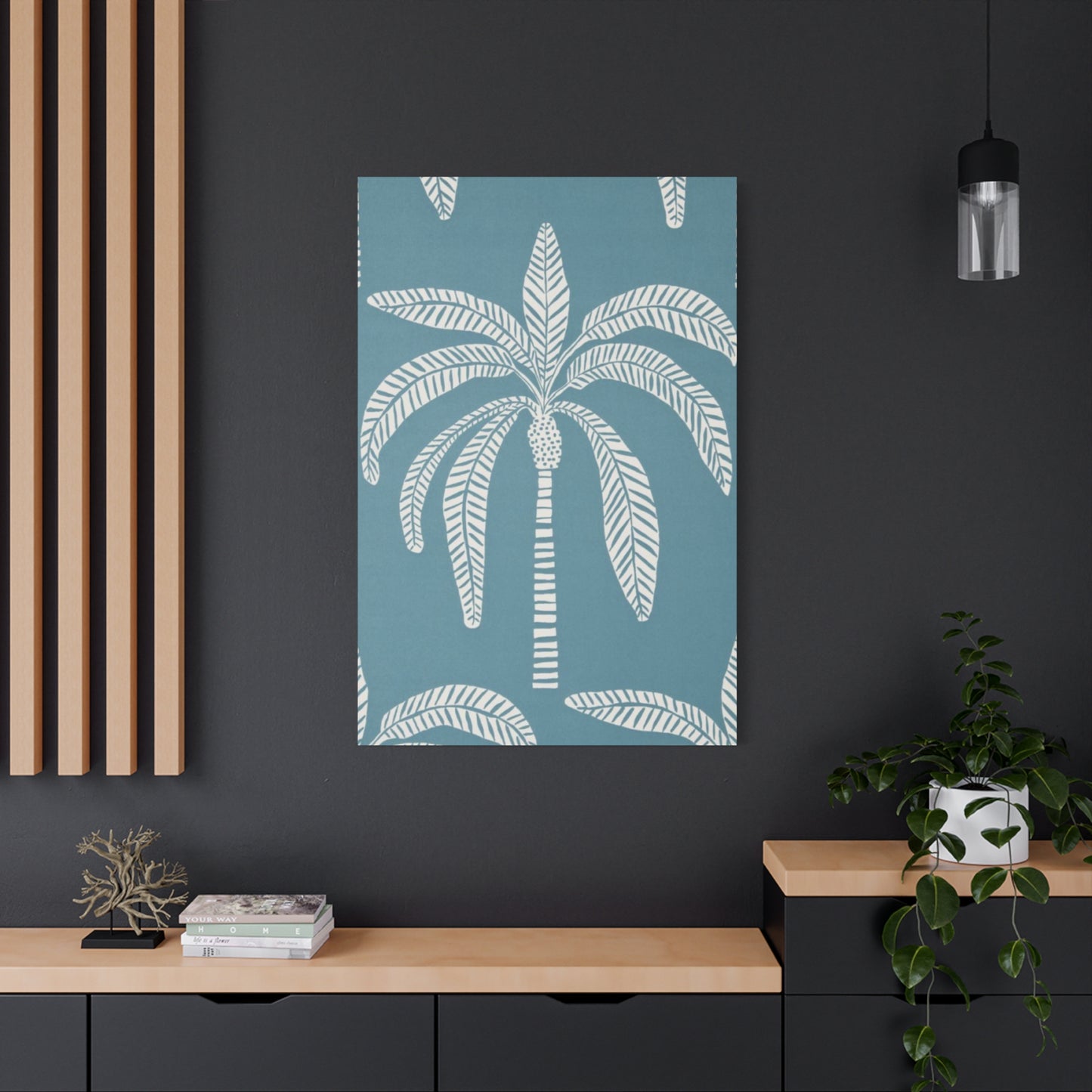The Psychology of Tropical Decor: Why Palm Tree Wall Art Makes Us Feel Relaxed
The world of interior design has witnessed a remarkable shift towards incorporating natural elements that evoke feelings of tranquility and escape. Palm tree wall art has emerged as one of the most sought-after decorative elements, transforming ordinary living spaces into tropical sanctuaries. This growing trend reflects our collective desire to bring the serenity and beauty of paradise destinations into our daily lives.
In recent years, homeowners have increasingly recognized the psychological benefits of surrounding themselves with nature-inspired artwork. The appeal of palm tree imagery extends far beyond mere aesthetics, tapping into our innate connection with the natural world. These artistic representations serve as daily reminders of peaceful beach vacations, swaying palms against sunset skies, and the gentle rhythm of island life.
The versatility of palm tree wall art makes it suitable for various interior design styles, from modern minimalist spaces to bohemian-inspired rooms. Whether displayed as a single statement piece or incorporated into a curated gallery wall, these artworks have the power to instantly transport viewers to a mental oasis of calm and relaxation.
Interior designers and decorating enthusiasts have embraced this trend because of its ability to create focal points while maintaining a sense of harmony within a room. The organic shapes and natural colors found in palm tree artwork complement both neutral and bold color schemes, making them incredibly adaptable to existing decor.
Nature-Inspired Artwork in Home Decor
Scientific research has consistently demonstrated the profound impact that nature-inspired artwork can have on mental health and overall well-being. When we surround ourselves with images of natural landscapes, particularly those featuring trees and vegetation, our bodies respond with measurable physiological changes that promote relaxation and stress reduction.
Studies conducted by environmental psychologists have revealed that viewing nature imagery, including palm tree artwork, can significantly lower cortisol levels in the body. Cortisol, commonly known as the stress hormone, is responsible for many of the negative effects associated with chronic stress, including elevated blood pressure, compromised immune function, and disrupted sleep patterns.
The presence of palm tree wall art in living spaces has been linked to improved cognitive function and enhanced creativity. The calming visual elements found in these artworks help reduce mental fatigue and allow the mind to enter a more relaxed state conducive to clear thinking and problem-solving. This phenomenon, known as attention restoration theory, suggests that exposure to nature imagery helps replenish our capacity for focused attention.
Furthermore, the tropical associations connected with palm tree imagery can trigger positive memories and emotions related to vacations, relaxation, and freedom from daily responsibilities. This psychological phenomenon, called environmental memory, helps create a sense of mental escape even when physically confined to indoor spaces.
The color palettes typically found in palm tree artwork, including various shades of green, blue, and warm earth tones, have been shown to promote feelings of balance and harmony. Green, in particular, is associated with growth, renewal, and tranquility, while blue tones evoke feelings of calm and stability.
Different Styles and Approaches to Palm Tree Art
The world of palm tree wall art encompasses a diverse range of artistic styles and approaches, each offering unique aesthetic qualities and emotional responses. From photorealistic prints that capture every detail of swaying fronds to abstract interpretations that distill the essence of tropical beauty, there are options to suit every taste and interior design preference.
Photography-based palm tree art remains one of the most popular choices among homeowners seeking to bring authentic tropical beauty into their spaces. High-quality photographic prints capture the intricate details of palm fronds, the play of light and shadow on bark textures, and the dramatic silhouettes created by these iconic trees against various sky conditions. These realistic representations provide an immediate sense of connection to actual tropical environments.
Vintage-inspired palm tree artwork has gained significant popularity among those who appreciate the nostalgic charm of retro travel posters and mid-century modern design elements. These pieces often feature muted color palettes, simplified forms, and artistic techniques reminiscent of earlier decades when tropical imagery first became associated with luxury and leisure.
Contemporary artists have also embraced palm tree subjects, creating modern interpretations that incorporate bold colors, geometric elements, and innovative composition techniques. These contemporary pieces often blend traditional palm tree imagery with current artistic trends, resulting in artwork that feels both timeless and current.
Watercolor palm tree paintings offer a softer, more ethereal approach to tropical artwork. The fluid nature of watercolor medium allows artists to capture the gentle movement of palm fronds and the atmospheric qualities of tropical light in ways that feel organic and spontaneous.
Black and white palm tree photography and artwork provide sophisticated alternatives for those who prefer monochromatic color schemes or minimalist design approaches. These pieces focus on form, texture, and composition rather than color, often creating dramatic visual impact through contrast and lighting.
Choosing the Right Palm Tree Art for Your Space
Selecting the perfect palm tree wall art for your home requires careful consideration of multiple factors, including room size, existing color schemes, lighting conditions, and personal style preferences. The goal is to choose pieces that enhance your space while reflecting your individual taste and lifestyle.
Room size plays a crucial role in determining the appropriate scale for palm tree artwork. Large, open spaces can accommodate oversized statement pieces that serve as dramatic focal points, while smaller rooms benefit from appropriately scaled artwork that complements rather than overwhelms the existing proportions.
The existing color palette in your room should guide your artwork selection process. Palm tree art with predominantly green tones works beautifully in spaces with neutral backgrounds, while pieces featuring sunset colors or ocean blues can complement rooms with warmer or cooler color schemes respectively.
Lighting conditions significantly impact how palm tree artwork appears in your space. Natural light tends to enhance the vibrancy and detail in photographic prints, while artificial lighting can create different moods and emphasize various aspects of the artwork depending on the type and direction of illumination.
Consider the emotional atmosphere you want to create in each space when selecting palm tree art. Serene beach scenes with gentle waves and distant palms promote relaxation and are ideal for bedrooms and quiet retreat areas, while more vibrant and energetic palm tree imagery can energize living spaces and social areas.
The style of your existing furniture and decor should also influence your artwork choices. Modern, minimalist furniture pairs well with clean, contemporary palm tree photography, while vintage or bohemian decor styles complement more artistic or stylized palm tree interpretations.
Color Psychology in Palm Tree Wall Art
The colors present in palm tree wall art play a fundamental role in determining the psychological and emotional impact these pieces have on viewers. Understanding color psychology can help you select artwork that supports your desired mood and atmosphere while complementing your existing interior design.
Green, the dominant color in most palm tree imagery, is widely recognized as one of the most psychologically beneficial colors for human well-being. This color is associated with nature, growth, renewal, and harmony, making it an excellent choice for creating calming and restorative environments. Different shades of green evoke varying emotional responses, from the energizing effects of bright lime greens to the soothing qualities of deeper forest tones.
Blue elements commonly found in palm tree artwork, whether representing ocean waters or sky backgrounds, contribute to feelings of tranquility, stability, and peace. Research has shown that blue can actually lower heart rate and blood pressure, making it particularly valuable for creating relaxing environments in bedrooms and meditation spaces.
Warm tones such as yellows, oranges, and coral colors often appear in sunset palm tree scenes and tropical beach imagery. These colors are associated with energy, optimism, and warmth, making them excellent choices for social spaces like living rooms and dining areas where you want to create welcoming and stimulating environments.
Earth tones including browns and tans, frequently represented in palm tree trunks and sandy beach scenes, provide grounding elements that create feelings of stability and connection to nature. These colors work particularly well in spaces where you want to promote feelings of comfort and security.
The contrast between different colors in palm tree artwork also affects its psychological impact. High contrast pieces with dramatic color differences create more stimulating and energizing effects, while low contrast artwork with subtle color variations promotes relaxation and contemplation.
Framing Options and Presentation Techniques
The way palm tree wall art is framed and presented significantly impacts its visual effectiveness and longevity. Proper framing not only protects your artwork but also enhances its aesthetic appeal and helps integrate it seamlessly into your interior design scheme.
Traditional wooden frames remain popular choices for palm tree artwork because they complement the natural subjects depicted in the art. Different wood tones can create various effects, from the warm, rustic appeal of natural pine or oak to the sophisticated elegance of darker walnut or cherry finishes.
Metal frames offer contemporary alternatives that work particularly well with modern and minimalist interior design styles. Silver, gold, and black metal frames can create different aesthetic effects, with silver providing cool, modern appeal, gold adding warmth and luxury, and black creating dramatic contrast and sophistication.
Floating frames have gained popularity for their ability to create the illusion that artwork is floating within the frame, adding depth and dimension to the presentation. This technique works particularly well with palm tree photography and can enhance the sense of depth already present in landscape imagery.
Matting options provide additional opportunities to enhance palm tree artwork presentation. White and cream mats create classic, timeless looks that work with virtually any decor style, while colored mats can be used to complement or contrast with colors present in the artwork or surrounding room.
The size relationship between artwork and frame also affects the overall visual impact. Wider frames tend to make artwork appear more substantial and formal, while thinner frames maintain focus on the artwork itself and can create more casual, contemporary appearances.
Glass options for framing include regular glass, non-reflective glass, and UV-protective glass. Non-reflective glass eliminates glare issues that can interfere with artwork viewing, while UV-protective glass helps preserve colors and prevent fading over time.
Creating Gallery Walls with Palm Tree Themes
Gallery walls featuring palm tree artwork offer exciting opportunities to create dynamic and visually engaging displays that transform entire wall sections into tropical showcases. Successfully designing these arrangements requires careful planning and consideration of various aesthetic and practical factors.
The foundation of any successful gallery wall begins with selecting a cohesive theme or color palette that ties individual pieces together while allowing for interesting variety. Palm tree artwork naturally provides thematic unity, but considering color relationships, artistic styles, and size variations helps create more sophisticated and visually appealing arrangements.
Layout planning is crucial for gallery wall success. Creating paper templates of each piece and arranging them on the floor or taping them to the wall allows you to experiment with different configurations before committing to nail holes. The most effective gallery walls typically feature a mix of sizes and orientations while maintaining balanced visual weight distribution.
Spacing between artworks affects the overall cohesiveness and readability of gallery wall displays. Generally, maintaining consistent spacing of two to four inches between pieces creates unified appearances, while varying spacing can add dynamic energy to the arrangement.
Central focal points help anchor gallery wall compositions and provide visual stability. This might be the largest piece, the most colorful artwork, or the piece with the most dramatic subject matter. Other elements should be arranged to support and complement this central focus.
Height placement guidelines suggest hanging gallery walls so that the center point of the arrangement sits at eye level, typically around 57 to 60 inches from the floor. However, this can be adjusted based on furniture placement and room proportions.
Incorporating different types of palm tree artwork within gallery walls adds visual interest and prevents monotony. Mixing photography with paintings, vintage prints with contemporary pieces, or color images with black and white creates dynamic tension that keeps viewers engaged.
Lighting Considerations for Palm Tree Artwork
Proper lighting plays a critical role in showcasing palm tree wall art effectively and creating the desired atmospheric effects in your living spaces. The type, intensity, and direction of lighting can dramatically alter how artwork appears and the emotional response it evokes.
Natural lighting provides the most accurate color representation and creates dynamic changes in artwork appearance throughout the day. Positioning palm tree art to take advantage of natural light can enhance its vibrancy and detail, but consideration must be given to preventing direct sunlight exposure that can cause fading over time.
Artificial lighting options include ambient, task, and accent lighting, each serving different purposes in artwork presentation. Ambient lighting provides general illumination for the room, task lighting serves functional purposes, and accent lighting specifically highlights and enhances artwork displays.
Picture lighting, including wall-mounted picture lights and track lighting systems, offers dedicated illumination for artwork. These lighting solutions can be adjusted to provide optimal brightness and angle for viewing palm tree art while minimizing glare and shadows.
The color temperature of lighting significantly affects how colors appear in palm tree artwork. Warm light (2700K-3000K) enhances yellows, reds, and warm tones, while cool light (4000K-5000K) better represents blues and greens. Choosing appropriate color temperatures helps ensure artwork appears as intended.
Dimming capabilities allow for mood adjustment and can transform the same palm tree artwork from energizing focal points during active periods to calming, contemplative elements during relaxation times. This flexibility maximizes the versatility of your art investment.
Avoiding common lighting mistakes helps preserve artwork quality and optimize visual presentation. These include using lights that generate excessive heat, creating harsh shadows or glare, or positioning lights at angles that create distracting reflections on glass-covered artwork.
Palm Tree Art in Different Rooms of the Home
Each room in your home offers unique opportunities and challenges for incorporating palm tree wall art, and understanding how to adapt these decorative elements to different spaces maximizes their impact and effectiveness.
Living rooms provide excellent showcases for palm tree artwork because these spaces typically feature larger wall areas and serve as primary gathering places for family and guests. Statement-sized palm tree prints can serve as dramatic focal points above sofas or fireplaces, while collections of smaller pieces can create interesting gallery wall displays.
Bedrooms benefit from the calming and restorative qualities inherent in palm tree imagery. Placing serene palm tree scenes above beds can promote relaxation and better sleep quality, while the natural colors typically associated with these artworks complement peaceful bedroom environments.
Bathrooms offer unique opportunities to create spa-like atmospheres using palm tree wall art. The tropical associations of palm imagery naturally complement bathroom environments, especially when combined with natural materials and warm lighting. Moisture considerations make proper framing and placement crucial in these spaces.
Kitchen and dining areas can incorporate palm tree artwork to create welcoming and energizing environments for meal preparation and social dining. Smaller palm tree prints work well in kitchen spaces where wall area may be limited, while dining rooms can accommodate larger statement pieces.
Home offices and studies can benefit from the stress-reducing qualities of palm tree artwork. Research suggests that nature imagery in work environments can improve focus, reduce fatigue, and enhance creative thinking, making these spaces ideal locations for carefully chosen palm tree art.
Hallways and transitional spaces provide opportunities to extend tropical themes throughout the home while creating visual connections between rooms. Series of related palm tree prints can guide movement through spaces while maintaining decorative continuity.
Seasonal Styling and Adaptation Strategies
Palm tree wall art offers unique advantages for seasonal decorating because its tropical associations can provide consistent warmth and visual interest throughout the year while adapting to changing seasonal decor themes.
Spring styling can emphasize the growth and renewal aspects of palm tree imagery by incorporating fresh greenery, light fabrics, and bright accent colors that complement the natural tones in the artwork. This seasonal approach celebrates the emergence from winter while maintaining tropical warmth.
Summer decorating naturally aligns with palm tree art themes, making this the easiest season for integration. Beach-inspired accessories, lightweight textiles in ocean colors, and increased natural light enhance the tropical atmosphere created by palm tree artwork.
Fall adaptation strategies focus on incorporating warm, golden tones that complement sunset elements often present in palm tree art. Rich textiles, amber lighting, and earth-toned accessories can bridge the gap between tropical artwork and autumn decorating while maintaining visual harmony.
Winter styling challenges can be addressed by emphasizing the escapist qualities of palm tree art. During cold months, these tropical images provide psychological warmth and serve as reminders of warmer climates, helping combat seasonal mood changes while adding visual interest to potentially stark winter decor.
Holiday integration allows palm tree artwork to coexist with seasonal decorations by focusing on complementary colors and themes. Gold and warm white holiday lights can enhance the sunset tones in tropical artwork, while natural materials in holiday decor echo the organic themes present in palm tree imagery.
Transitional decorating between seasons can use palm tree art as constant anchors while changing surrounding elements. This approach provides decorative stability while allowing for seasonal variation in accessories, textiles, and accent pieces.
Maintenance and Care for Palm Tree Wall Art
Proper maintenance and care ensure that palm tree wall art maintains its visual appeal and continues to enhance your living spaces for years to come. Understanding appropriate cleaning techniques, storage methods, and preventive measures helps protect your investment while preserving artwork quality.
Dusting represents the most frequent maintenance requirement for framed palm tree artwork. Regular light dusting using soft, dry cloths or specialized art dusting brushes prevents accumulation of particles that can dull surfaces and potentially damage artwork over time.
Cleaning glass surfaces requires gentle approaches that avoid scratching or leaving residue. Specialized glass cleaners designed for artwork or simple solutions of distilled water and white vinegar applied with lint-free cloths provide effective cleaning without risking damage to underlying artwork.
Environmental protection involves controlling exposure to harmful elements including direct sunlight, excessive humidity, temperature fluctuations, and airborne contaminants. Positioning artwork away from heating vents, air conditioning units, and areas prone to moisture helps maintain stable conditions.
Frame maintenance includes periodic inspection for loose joints, damaged corners, or deteriorating hardware. Addressing minor frame issues promptly prevents more serious damage and ensures continued protection for the enclosed artwork.
Professional conservation may be necessary for valuable or damaged palm tree artwork. Understanding when to seek professional help versus attempting DIY repairs can prevent inadvertent damage while ensuring appropriate care for significant pieces.
Storage considerations become important when rotating artwork displays or protecting pieces during moves or renovations. Proper storage materials, positioning, and environmental controls help preserve artwork quality during periods when pieces are not actively displayed.
Budget-Friendly Options and DIY Approaches
Creating beautiful palm tree wall art displays doesn't require significant financial investment, and numerous budget-conscious approaches can achieve impressive results while staying within reasonable spending limits.
Print-on-demand services offer affordable options for obtaining high-quality palm tree artwork in various sizes and formats. These services allow you to select from extensive collections of tropical imagery while choosing printing options that fit your budget and space requirements.
DIY framing projects can significantly reduce costs while providing opportunities for customization and creative expression. Basic framing supplies and techniques can transform affordable prints into professional-looking art displays that rival more expensive alternatives.
Photography projects allow creative individuals to create original palm tree artwork using their own images from vacations or local palm trees. Digital editing techniques can enhance and stylize photographs to create unique artistic interpretations that reflect personal experiences and aesthetic preferences.
Thrift store and secondhand discoveries can yield unexpected palm tree art treasures at fraction of original costs. Vintage tropical prints, paintings, and decorative items often appear in secondhand markets, providing opportunities for unique finds that add character and history to your decor.
Printable art downloads represent one of the most budget-friendly options for obtaining palm tree artwork. Many artists and designers offer downloadable files that can be printed at home or through local printing services, providing immediate access to diverse tropical imagery at minimal cost.
Art swaps and trading arrangements with friends or family members can provide access to different palm tree artworks without monetary exchange. This approach allows for periodic refreshment of displays while building community connections around shared artistic interests.
Combining Palm Tree Art with Live Plants
The integration of live tropical plants with palm tree wall art creates powerful synergistic effects that enhance both the visual impact of the artwork and the overall ambiance of living spaces.
Plant selection should consider both aesthetic compatibility and practical growing requirements. Tropical plants such as monstera, bird of paradise, and various palm species naturally complement palm tree artwork while thriving in indoor environments with appropriate care.
Placement strategies maximize the visual connection between living plants and palm tree art. Positioning plants near artwork creates layered depth and reinforces tropical themes while providing opportunities for creative styling and seasonal arrangement changes.
Scale relationships between plants and artwork require careful consideration to maintain visual balance. Large palm tree artwork can support substantial plant specimens, while smaller prints work better with proportionally sized plant arrangements.
Color coordination between plant foliage and artwork colors creates cohesive design schemes that feel intentional and sophisticated. Varying shades of green in both living plants and palm tree art provide natural harmony while offering opportunities for subtle contrast and visual interest.
Lighting requirements for both plants and artwork must be balanced to ensure healthy plant growth while maintaining optimal artwork presentation. Strategic placement near windows or supplemental grow lights can address the needs of both elements.
Maintenance routines should consider the proximity of plants to artwork, ensuring that watering and care activities don't pose risks to framed pieces. Protective measures such as plant saucers and careful positioning help prevent water damage while maintaining aesthetic integration.
Technology Integration and Digital Displays
Modern technology offers innovative approaches to displaying and interacting with palm tree wall art, providing dynamic alternatives to traditional static displays while offering enhanced functionality and customization options.
Digital picture frames allow for rotating displays of palm tree imagery, providing variety and preventing visual monotony that can occur with static artwork. High-resolution displays can showcase multiple images from tropical collections while adapting to different moods and seasons.
Smart home integration enables automated lighting adjustments that optimize palm tree artwork presentation throughout the day. Programmable systems can enhance artwork visibility during active periods while creating subtle accent lighting for evening ambiance.
Augmented reality applications provide interactive experiences that can simulate the effects of different palm tree artworks in your space before making purchase decisions. These technologies allow virtual placement and sizing of artwork to ensure optimal fit and visual impact.
Digital art creation tools enable personalization of palm tree imagery through editing and customization of existing photographs or creation of original digital artwork. These approaches provide unique, personalized pieces that reflect individual experiences and aesthetic preferences.
Projection systems can transform entire walls into dynamic tropical displays, creating immersive environments that change throughout the day or respond to different activities and moods. While requiring more technical setup, these systems offer unparalleled flexibility and impact.
Interactive displays can provide information about the locations, species, or artistic techniques represented in palm tree artwork, adding educational value and deeper engagement with the pieces. Touch-screen integration can reveal additional content or allow customization of display parameters.
Cultural Significance and Symbolism
Palm trees carry rich cultural significance and symbolic meaning across different societies and historical contexts, adding layers of depth and meaning to palm tree wall art that extend beyond purely aesthetic considerations.
Ancient civilizations recognized palm trees as symbols of victory, peace, and eternal life. These associations persist in modern interpretations and can add meaningful dimensions to palm tree artwork selection and placement decisions.
Religious symbolism associated with palm trees appears in various traditions, where they represent triumph, righteousness, and divine blessing. Understanding these symbolic associations can inform artwork choices for spaces intended for reflection or spiritual contemplation.
Cultural representations of palm trees in art, literature, and popular media have evolved over centuries, creating contemporary associations with leisure, escape, and tropical paradise that influence modern decorating trends and personal responses to palm tree imagery.
Geographical significance varies depending on the specific palm species and locations depicted in artwork. Different regions have unique relationships with palm trees, and artwork representing specific locations can evoke memories and emotions related to travel experiences or cultural connections.
Psychological symbolism suggests that palm trees represent flexibility, resilience, and adaptation, as these trees bend with strong winds rather than breaking. These qualities can inspire personal reflection and serve as daily reminders of strength and adaptability.
Environmental symbolism connects palm trees with conservation efforts and awareness of tropical ecosystems. Choosing artwork that represents sustainable and protected environments can reflect personal values regarding environmental stewardship and global conservation efforts.
Investment Value and Collection Building
Palm tree wall art can represent both aesthetic enhancement and potential investment opportunities, particularly when selecting pieces from established artists or limited edition collections with documented provenance and quality.
Artist reputation significantly impacts the potential investment value of palm tree artwork. Researching artist backgrounds, exhibition histories, and market performance provides insight into potential appreciation and collectibility of specific pieces.
Edition sizes affect the exclusivity and potential value of palm tree prints and photographs. Limited editions with smaller print runs typically maintain higher values than open editions, though this must be balanced against accessibility and budget considerations.
Authentication and documentation become important factors when considering artwork as investment. Proper certificates of authenticity, artist signatures, and detailed provenance information help establish legitimacy and support potential future value.
Market trends in tropical and nature-themed artwork can influence investment decisions. Understanding collector preferences, emerging artists, and shifting aesthetic trends helps identify pieces with strong appreciation potential.
Condition maintenance becomes crucial for preserving investment value. Proper framing, environmental controls, and professional conservation when necessary help maintain artwork condition and support long-term value retention.
Portfolio diversification applies to art collecting just as it does to other investment categories. Building collections that include various artistic styles, time periods, and price points can provide both aesthetic satisfaction and financial risk management.
Environmental Considerations and Sustainability
Choosing palm tree wall art with attention to environmental impact and sustainability reflects growing awareness of ecological responsibility while supporting artists and producers who prioritize environmental stewardship.
Sustainable materials in framing and production include responsibly sourced wood frames, recycled metal components, and eco-friendly printing processes that minimize environmental impact without compromising quality or aesthetic appeal.
Local production reduces transportation-related carbon footprints while supporting regional artists and craftspeople. Seeking palm tree artwork created by local photographers or artists contributes to community economic development while minimizing environmental impact.
Digital alternatives reduce material consumption and waste associated with physical artwork production. High-quality digital displays can showcase tropical imagery while eliminating paper, ink, and frame material requirements.
Conservation themes in palm tree artwork can raise awareness about tropical ecosystem protection and climate change impacts on these important environments. Choosing artwork that supports or highlights conservation efforts aligns decorative choices with environmental values.
Recycling and upcycling opportunities exist for repurposing existing frames, materials, and artwork components. Creative reuse of materials reduces waste while potentially creating unique and personalized palm tree art displays.
Longevity considerations emphasize choosing high-quality materials and timeless designs that will remain aesthetically pleasing and structurally sound for many years, reducing the need for frequent replacement and associated environmental impact.
Health and Wellness Benefits
The incorporation of palm tree wall art into living spaces provides measurable health and wellness benefits that extend beyond aesthetic enhancement, contributing to improved quality of life and overall well-being.
Stress reduction occurs through the psychological associations between palm tree imagery and relaxation, vacation experiences, and natural environments. Regular exposure to these calming visual elements can help lower stress hormones and promote emotional balance.
Air quality improvements can result indirectly from palm tree artwork that inspires the addition of live tropical plants to living spaces. These plants provide natural air filtration while reinforcing the tropical aesthetic created by the artwork.
Sleep quality enhancement may result from placing calming palm tree imagery in bedrooms, where these peaceful scenes can promote relaxation and mental preparation for rest. The natural colors and serene subjects support healthy sleep environments.
Mental health benefits include improved mood, reduced anxiety, and enhanced sense of connection to nature, particularly important for individuals living in urban environments with limited access to natural landscapes.
Cognitive function improvements have been documented in environments that include nature imagery, including enhanced focus, creativity, and problem-solving abilities. These benefits make palm tree art valuable additions to home offices and study areas.
Social interaction can be enhanced by palm tree artwork that serves as conversation starters and creates welcoming environments for guests. The positive associations with tropical imagery help create hospitable and engaging social spaces.
Professional Design Integration
Working with interior designers and decorating professionals can maximize the impact and effectiveness of palm tree wall art while ensuring sophisticated integration with overall design schemes and architectural elements.
Design consultation provides expert guidance on artwork selection, sizing, placement, and integration with existing furnishings and architectural features. Professional designers bring experience and training that can prevent costly mistakes while optimizing aesthetic results.
Space planning considers room proportions, traffic patterns, sight lines, and functional requirements when determining optimal placement for palm tree artwork. Professional analysis ensures artwork enhances rather than interferes with space utilization.
Color coordination expertise helps select palm tree artwork that complements existing color schemes while providing opportunities for accent colors and visual interest. Designers understand color theory and can predict how different combinations will affect room ambiance.
Style integration ensures that palm tree artwork selections align with overall interior design themes while providing appropriate contrast and visual interest. Professional designers can bridge different style elements successfully.
Budget optimization helps prioritize art purchases within overall decorating budgets while achieving maximum impact. Designers can recommend cost-effective approaches and identify opportunities for significant visual improvement within budget constraints.
Timeline coordination ensures that artwork selection and installation align with other design elements and construction schedules. Professional project management prevents delays and ensures cohesive completion of design projects.
Future Trends and Innovations
The future of palm tree wall art promises exciting developments in materials, technologies, and artistic approaches that will expand possibilities for incorporating tropical imagery into living spaces.
Sustainable materials development continues to introduce environmentally friendly alternatives for frames, prints, and display systems. Innovations in recycled materials, biodegradable options, and renewable resources will provide eco-conscious choices without compromising quality.
Interactive technologies may enable palm tree artwork that responds to environmental conditions, time of day, or user preferences. Smart artwork could adjust colors, brightness, or even content based on programmed parameters or sensor inputs.
Customization capabilities are expanding through digital printing advances and on-demand production systems. Future developments may allow real-time personalization of palm tree artwork based on personal photographs, preferred colors, or specific location references.
Virtual and augmented reality integration may create immersive experiences that extend beyond static wall displays. These technologies could provide multi-sensory tropical experiences that include visual, auditory, and potentially tactile elements.
Collaborative platforms may emerge that connect artists, collectors, and decorating enthusiasts around shared interests in tropical and nature-themed artwork. These communities could facilitate artwork sharing, artist discovery, and trend identification.
Artificial intelligence applications might assist in artwork selection by analyzing room characteristics, personal preferences, and design trends to recommend optimal palm tree art choices for specific spaces and individuals.
Conclusion
Palm tree wall art represents far more than simple decorative elements for our living spaces. These carefully chosen pieces serve as daily portals to paradise, offering psychological benefits, aesthetic enhancement, and emotional connection to the natural world that enriches our everyday experiences. Throughout this comprehensive exploration, we have discovered the multifaceted nature of incorporating tropical imagery into our homes and the profound impact these artistic choices can have on our well-being and quality of life.
The scientific foundation supporting the benefits of nature-inspired artwork provides compelling evidence for choosing palm tree wall art as more than mere decoration. The measurable reductions in stress hormones, improvements in cognitive function, and enhancement of overall mental health demonstrate that these artistic investments contribute meaningfully to our physical and emotional wellness. When we surround ourselves with images of swaying palms, tropical beaches, and serene landscapes, we create environments that actively support our health and happiness.
The versatility of palm tree wall art ensures its relevance across diverse interior design styles and personal preferences. Whether your aesthetic leans toward modern minimalism, vintage charm, or eclectic bohemian style, there are palm tree art options that can seamlessly integrate with your existing decor while adding that essential touch of tropical tranquility. This adaptability makes palm tree artwork a smart long-term investment that can evolve with changing design trends and personal tastes.
The practical considerations we have explored, from proper lighting and framing to seasonal styling and maintenance, provide the knowledge necessary to maximize your artistic investment. Understanding these technical aspects ensures that your palm tree wall art not only looks beautiful but also maintains its visual impact and physical condition for years to come. The attention to these details transforms good intentions into successful decorative outcomes.
The cultural and symbolic dimensions of palm trees add layers of meaning that extend beyond surface beauty. These trees have represented resilience, peace, and eternal life across cultures and throughout history. When we choose palm tree artwork, we connect with these deeper significances, creating spaces that resonate with positive symbolism and meaningful associations. This cultural richness enhances the personal satisfaction derived from our decorative choices.
The environmental and sustainability considerations increasingly important to contemporary consumers find expression in thoughtful palm tree art selection. By choosing pieces created with sustainable materials, supporting local artists, or selecting artwork that promotes conservation awareness, we align our decorative decisions with our values regarding environmental stewardship. This alignment creates additional satisfaction and meaning in our artistic choices.
Looking toward the future, the evolution of palm tree wall art promises exciting developments in technology, customization, and interactive possibilities. While these innovations will undoubtedly expand our options and enhance our experiences, the fundamental appeal of palm tree imagery, its connection to nature, relaxation, and beauty, will remain constant. This enduring appeal ensures that investments in quality palm tree wall art will continue to provide value and enjoyment regardless of technological changes.
The process of selecting, displaying, and living with palm tree wall art becomes a journey of personal expression and environmental creation. Each piece chosen reflects individual taste, experiences, and aspirations while contributing to the overall atmosphere and functionality of our living spaces. This creative process provides ongoing satisfaction and opportunities for refinement and evolution as our lives and preferences change.
In conclusion, palm tree wall art offers a unique combination of aesthetic beauty, psychological benefits, cultural significance, and personal expression that makes it an exceptional choice for enhancing our living environments. The comprehensive exploration of styles, techniques, considerations, and possibilities presented in this guide provides the foundation for making informed decisions that will bring years of enjoyment and benefit.
Whether you are just beginning to explore the world of tropical interior design or seeking to refine and expand an existing collection, the principles and insights shared here will guide you toward choices that truly transform your living spaces into personal paradises. The journey of bringing tropical beauty into our homes through carefully chosen palm tree wall art enriches not only our immediate environments but also our daily experiences and overall quality of life.
The invitation to create your own tropical sanctuary awaits. With the knowledge, inspiration, and practical guidance provided throughout this comprehensive exploration, you are well-equipped to embark on the rewarding journey of selecting and displaying palm tree wall art that will bring lasting beauty, meaning, and joy to your home. Let these artistic elements serve as daily reminders of paradise, sources of calm in busy lives, and expressions of your appreciation for the natural beauty that surrounds and sustains us all.

















